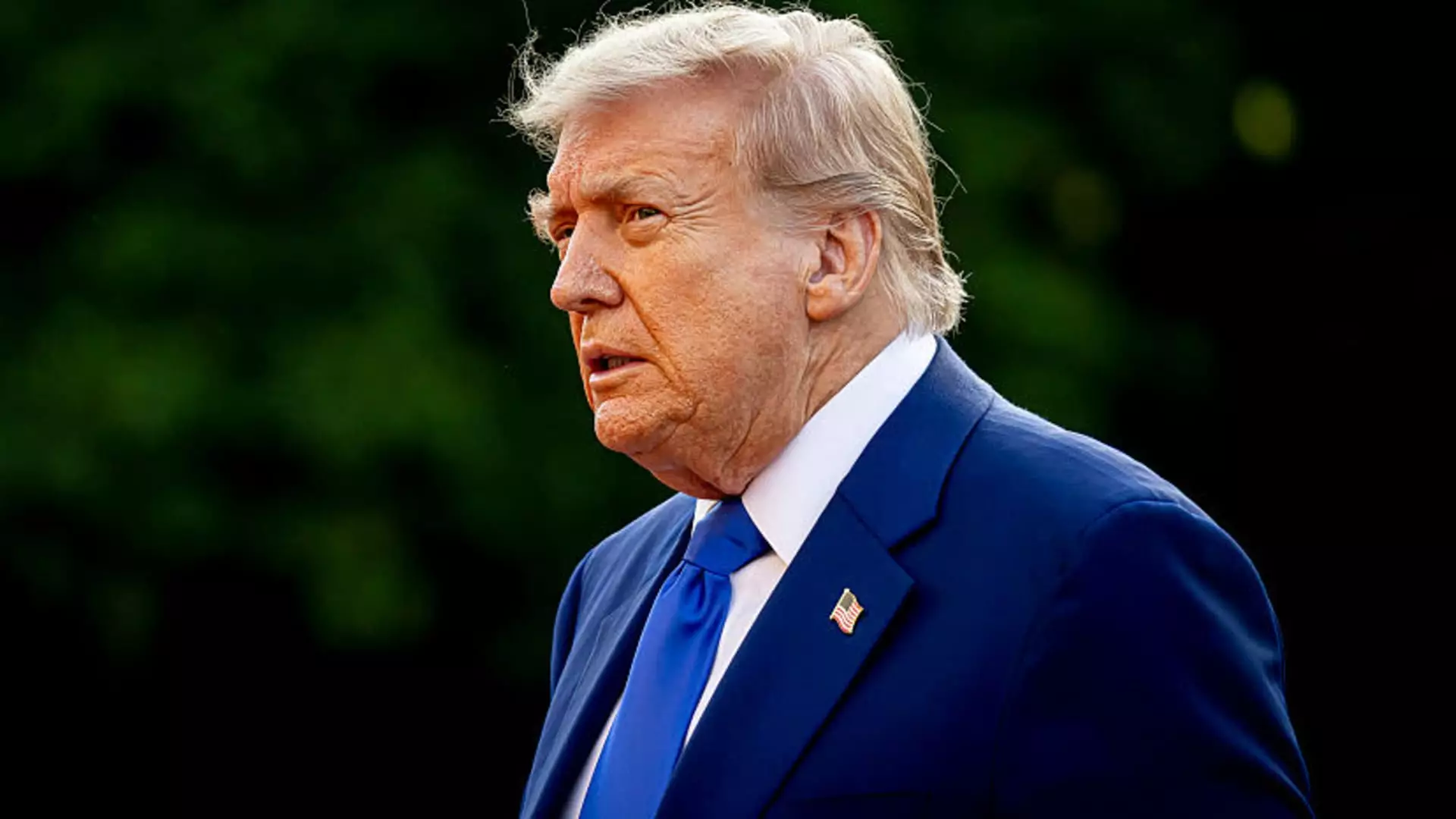In the tumultuous landscape of contemporary American politics, few topics are as contentious as trade tariffs. President Donald Trump’s strategy surrounding tariff negotiations has become a dance of unpredictability, with his administration signaling that deadlines are not as firm as previously advertised. This fluidity raises crucial questions about the efficacy of Trump’s approach and its long-term implications for both the U.S. economy and international relations.
Press secretary Karoline Leavitt recently stated that the deadline for striking trade deals by July is “not critical,” reflecting a broader trend of improvisation in Trump’s tariff policies. This statement warrants scrutiny, as it suggests an administration that is reactive rather than proactive, allowing foreign counterparts to dictate the tempo of negotiations while posing risks to the American workforce.
Trump’s “Reciprocal” Tariff Quandary
The drama intensifies when we consider Trump’s threats to impose a staggering 50% tariff on the European Union. His sudden decision to pause these tariffs until July 9, following a request from EU President Ursula von der Leyen for more time, exposes a significant vulnerability in his trade tactics. It speaks volumes about the power dynamics at play; a President who once seemed invincible in the negotiation arena now appears tethered to the diplomatic whims of allies and competitors alike.
This truce, however temporary, illustrates the precarious balance that must be maintained when playing an aggressive trade game. It illuminates the unsettling reality that, despite the bluster surrounding “America First,” the current administration may be more invested in maintaining the appearance of strength than in actualizing substantial policy gains. The looming expiration of a 90-day tariff relief, potentially reinstating a blanket 10% rate across multiple nations, raises the stakes further. Herein lies the crux of the issue: whether reinstating these tariffs will genuinely benefit the American worker, or simply serve as another tool for political posturing.
Beneath the Surface: Economic Indicators and Political Machinations
Economic indicators tell a story of their own, as market reactions have shown a propensity for optimism amidst this uncertainty. Stocks soared in response to Leavitt’s remarks, suggesting that investors may have more faith in the administration’s negotiation skills than the cold, hard facts suggest. Yet this reliance on temporary market upticks can be a dangerous gamble; it risks overshadowing the underlying economic vulnerabilities that remain unresolved.
Further complicating matters is the narrative woven by members of the administration. White House Council of Economic Advisers chairman Stephen Miran hinted at potential extensions for “good faith” negotiators, yet the vague criteria for “good faith” raises questions. Are these extensions merely a smokescreen to mask the failures to finalize agreements ahead of the deadlines? In the past 90 days, the White House has only managed to clinch tenuous frameworks with China and the United Kingdom, casting doubt on the legitimacy of claims regarding impending trade agreements with India.
The inconsistency serves to undermine any confidence the American public might have in the administration’s ability to deliver tangible results. Treasury Secretary Scott Bessent’s testimony indicating a “high likelihood” of extending the July 8 deadline reflects a frustrating pattern of unfulfilled promises, continually kicking the can down the road in hopes that fate will conspire for a mighty negotiating breakthrough.
The Connection Between Tax Legislation and Trade Deals
As if the tariff saga wasn’t convoluted enough, the interdependence of the proposed tax-and-spending legislation adds another layer of complexity. National Economic Council director Kevin Hassett’s suggestion that trade agreements will emerge only after Congress passes a major domestic bill raises eyebrows. It feels less like sound policy-making and more like a high-stakes political poker game where the stakes are ever-increasing, and the interests of American workers remain obscured.
This intricate web of tariffs and tax policy fundamentally underscores a glaring weakness in Trump’s strategy: his administration appears to be relying on a gamble rather than on solid economic foundations. While the potential for a series of trade agreements is tantalizing, it also beckons scrutiny about the lasting benefits for the American economy. As the deadlines loom, let us not lose sight of the bigger picture; are we steering toward genuine progress or merely an illusion draped in political bravado?

